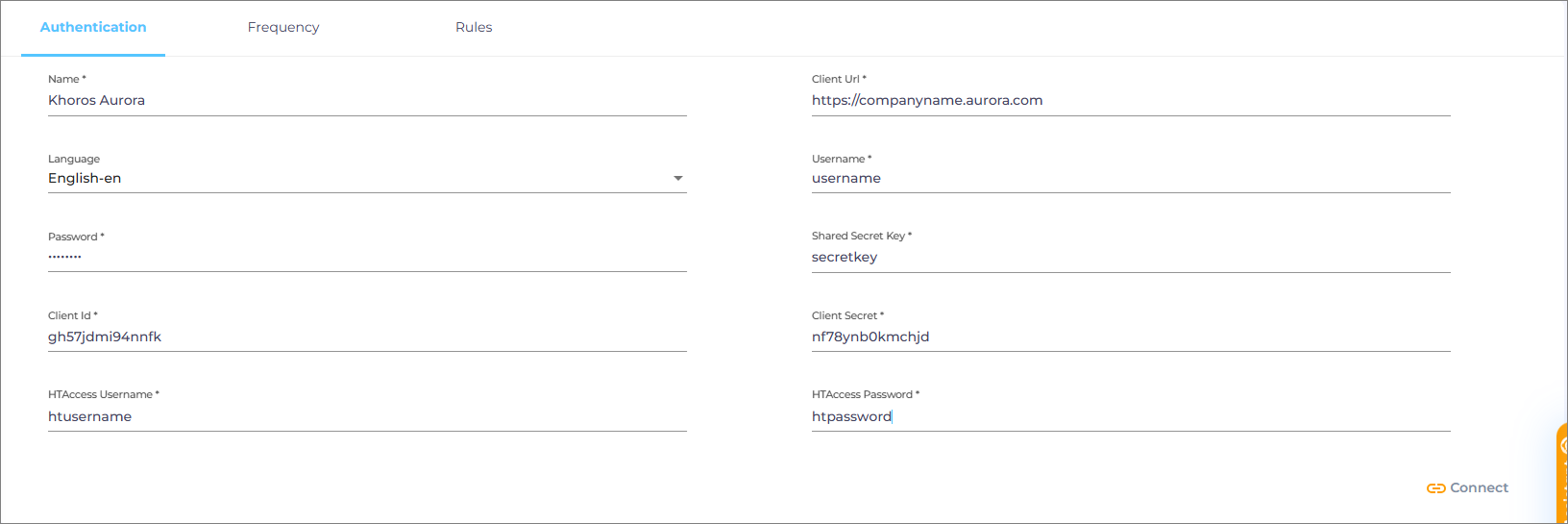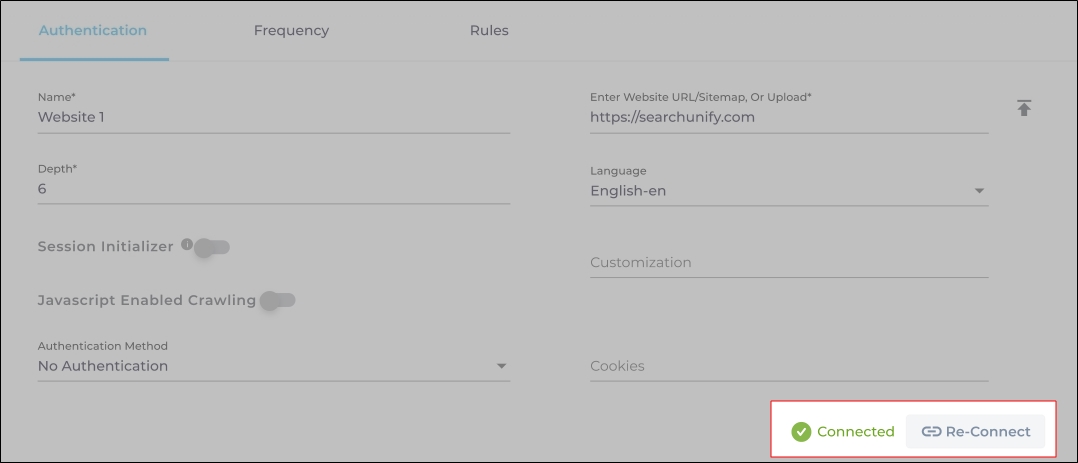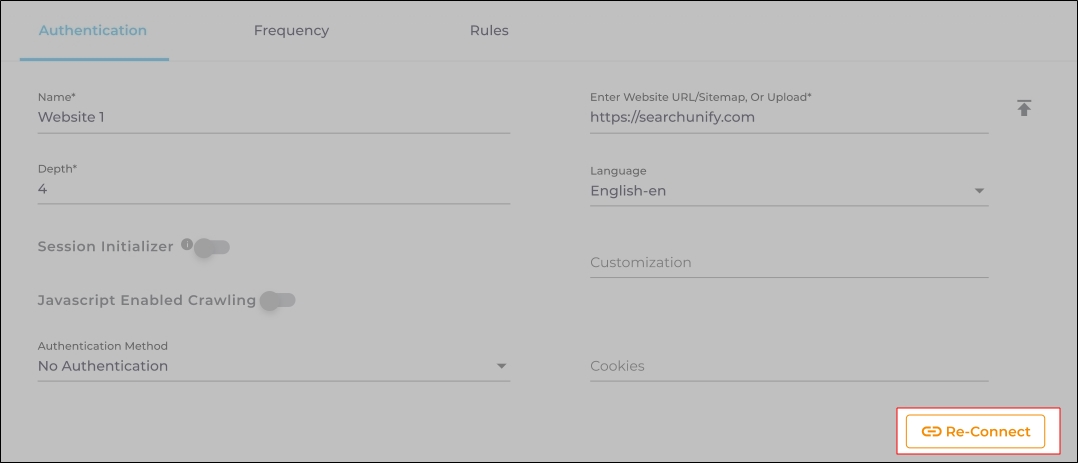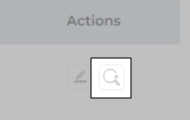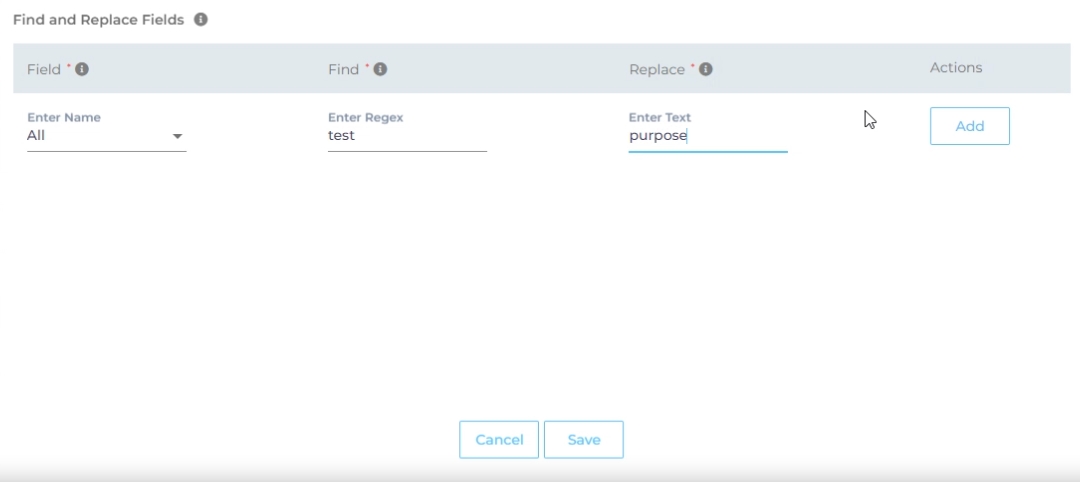Use Khoros Aurora as a Content Source
Khoros Aurora offers a more streamlined and feature-rich approach to online community management and customer engagement with enhanced usability and updated design, when compared to Khoros Classic Community (Atlas).
If your organization’s online community is developed on Khoros’ Aurora platform, you can index its contents in SearchUnify as explained below.
Prerequisite
You must have the account user credentials for Khoros Aurora instance, preferably admin credentials or an account that has an access to the necessary permissions and data access that you want to crawl in SearchUnify.
Establish a Connection
-
Find Khoros Aurora and click Add.
-
Under the Authentication tab, enter the following details:
-
Name: Enter a name for your Content Source.
-
Client Url: Enter the Khoros community instance URL.
-
Language: Select the language of your Khoros Aurora community.
-
Username: Enter the username of your Khoros Aurora user account.
-
Password: Enter the password of your Khoros Aurora user account.
-
Shared Secret Key: Refer to this doc to know how you can get the Shared Secret Key: Obtain Khoros Aurora Client ID, Client Secret, Shared Secret Key
-
Client Id: Refer to this doc to know how you can get the Client ID: Obtain Khoros Aurora Client ID, Client Secret, Shared Secret Key
-
Client Secret: Refer to this doc to know how you can get the Client Secret: Obtain Khoros Aurora Client ID, Client Secret, Shared Secret Key
-
HTAccess Username: Enter the HTAccess Username of your Khoros Aurora community instance.
-
HTAccess Password: Enter the HTAccess password of your Khoros Aurora community instance.
Fig: A snapshot of the Khoros Aurora Authentication tab.
-
-
After entering the required details, click Connect.
-
If the entered details are correct and the connection is successfully established, you will be directed to the Frequency tab.
Re-Connect
An admin can edit a Content Source for multiple reasons, including:
-
To reauthenticate
-
To fix a crawl error
-
To change frequency
-
To add or remove an object or a field for crawling
When a Content Source is edited, either a Connect or a Re-Connect button is displayed.
-
Case 1: When the Connect button is displayed:
-
When the Connect button is displayed if the Content Source authentication is successful. Along with the button, a message is displayed There are no crawl errors and the Content Source authentication is valid.
-
Fig. The Connect button is displayed on the Authentication tab.
-
Case 2: When the Re-connect button is displayed:
-
The Re-connect button is displayed when the authentication details change or the authentication fails for any reason.
-
In both cases, the Content Source connection must be authenticated again. To reauthenticate a Content Source, enter the authentication details, and click Re-Connect.
-
Fig. The Re-Connect button is displayed on the Authentication tab.
Set Up Crawl Frequency
The first crawl is always performed manually after configuring the content source. In the Choose a Date field, select a date to start the crawl; only data created after the selected date will be crawled*. For now, leave the frequency set to its default value, Never, and click Set.
Fig. The Frequency tab when "Frequency" is set to "Never".
Select Objects and Content Fields for Indexing
Once you have set up the connection and frequency, next define the fields whose data you want to index in SearchUnify. All Khoros Aurora objects are supported in SearchUnify.
In the Rules tab, you will see the By Content Type subtab and you can see the list of the supported objects.
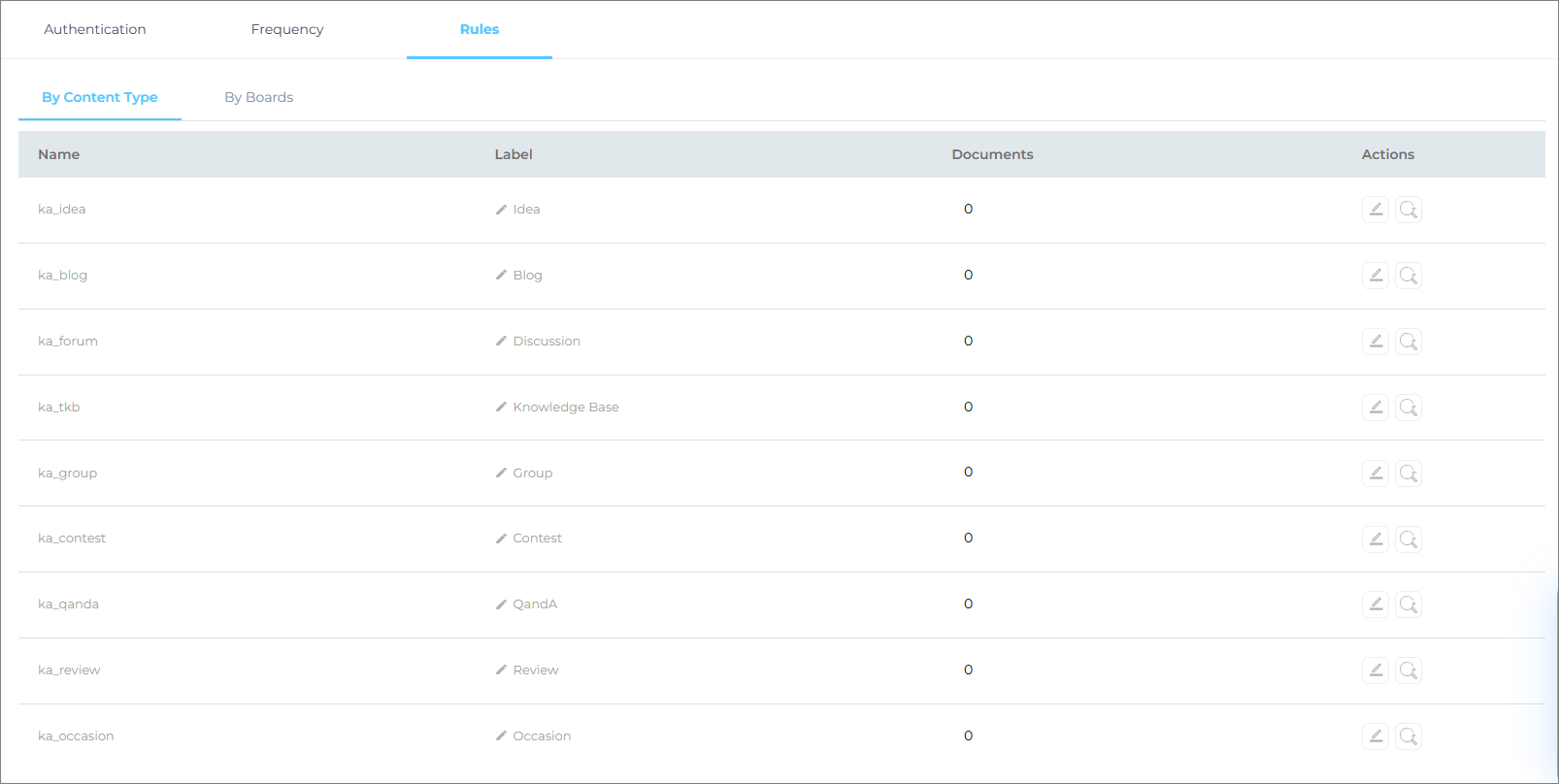
Fig: A snapshot of Khoros Aurora objects preconfigured in the Rules tab.
-
Click EDIT to see the pre-configured fields of an object.
NOTE. You can add or delete the content fields. Although, it is not recommended for users other than admins to make any changes in the fields.
-
Switch to By Boards subtab. Find your boards with the index. For example, a board named "Lithium Discussions" is found under "L" as shown in the image below.
Note(s):
-
If you have added or deleted a board, use Reindex to view the latest list of boards.
-
If no board is selected, then SearchUnify will index data from all the boards.
-
-
After selecting the fields whose data you want SearchUnify to index, click Save.
-
To index your Khoros Auora community contents, start the crawl.
Related Doc: (Re)crawl a Content Source
Find and Replace
Users on the Q2 '24 release or a later version will notice a new button next to each object on the Rules screen. It resembles a magnifying glass and is labeled "Find and Replace." You can use this feature to find and replace values in a single field or across all fields. The changes will occur in the search index and not in your content source.
Fig. The "Find and Replace" button on the Rules tab in the Actions column.
Find and Replace proves valuable in various scenarios. A common use case is when a product name is altered. Suppose your product name has changed from "SearchUnify" to "SUnify," and you wish for the search result titles to immediately reflect this change.
-
To make the change, click
 .
. -
Now, choose either "All" or a specific content source field from the "Enter Name" dropdown. When "All" is selected, any value in the "Find" column is replaced with the corresponding value in the "Replace" column across all content source fields. If a particular field is chosen, the old value is replaced with the new value solely within the selected field.
-
Enter the value to be replaced in the Find column and the new value in the Replace column. Both columns accept regular expressions.
Fig. Snapshot of Find and Replace.
-
Click Add. You will see a warning if you are replacing a value in all fields.
-
Click Save to apply settings
-
Run a crawl for the updated values to reflect in the search results.
After the First Crawl
Return to the Content Sources screen and click ![]() in Actions. The number of indexed documents is updated after the crawl is complete. You can view crawl progress by clicking
in Actions. The number of indexed documents is updated after the crawl is complete. You can view crawl progress by clicking ![]() (View Crawl Logs) in Actions.
(View Crawl Logs) in Actions.
Once the first crawl is complete, click ![]() in Actions to open the content source for editing, and set a crawl frequency.
in Actions to open the content source for editing, and set a crawl frequency.
-
In Choose a Date, click
 to fire up a calendar and select a date. Only the data created or updated after the selected date is indexed.
to fire up a calendar and select a date. Only the data created or updated after the selected date is indexed. -
The following options are available for the Frequency field:
-
When Never is selected, the content source is not crawled until an admin opts for a manual crawl on the Content Sources screen.
-
When Minutes is selected, a new dropdown appears where the admin can choose between three values: 15, 20, and 30. Picking 20 means that the content source crawling starts every 20 minutes.
-
When Hours is selected, a new dropdown is displayed where the admin can choose between eight values between 1, 2, 3, 4, 6, 8, 12, and 24. Selecting 8 initiates content crawling every 8 hours.
-
When Daily is selected, a new dropdown is displayed where the admin can pick a value between 0 and 23. If 15 is selected, the content source crawling starts at 3:00 p.m. (1500 hours) each day.
-
When Day of Week is selected, a new dropdown is displayed where the admin can pick a day of the week. If Tuesday is chosen, then content source crawling starts at 0000 hours on every Tuesday.
-
When Day of Month is selected, a new dropdown appears where the admin can select a value between 1 and 30. If 20 is chosen, then content source crawling starts on the 20th of each month.
It is recommended to pick a date between the 1st and 28th of the month. If 30 is chosen, then the crawler may throw an error in February. The error will be “Chosen date will not work for this month.”
-
When Yearly is selected, the content source crawling starts at midnight on 1 January each year.
Fig. The content source crawling starts at 00:00 on each Tuesday.
-
- Click Set to save the crawl frequency settings.
-
Click Save.




